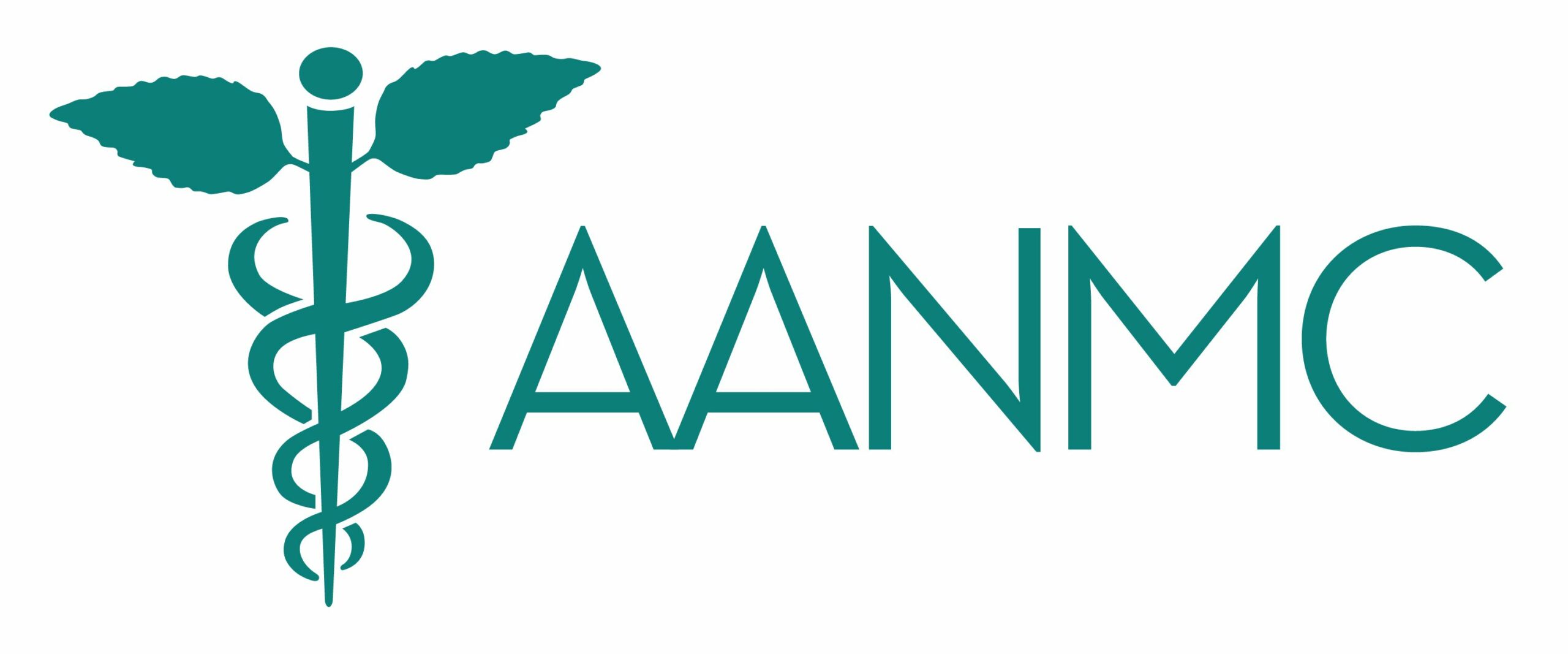Arthritis is a well-known condition that can cause extreme, debilitating, life-altering pain. According to the Arthritis Foundation, arthritis impacts over 50 million Americans, making it the number one cause of disability in the country.1 That means 1 in every 5 adults, 300,000 children, and countless families deal with the ramifications of this painful condition every day. The Centers for Disease Control report that more than 43% of adults with arthritis have work or leisure related activity limitations due to pain.2 Arthritis is really an umbrella term for more than 100 different conditions.3 While all types exhibit the same general symptoms of pain and joint inflammation, each has a unique etiology, some better understood than others. The most common forms of arthritic conditions include osteoarthritis (OA) and inflammatory arthritis types including rheumatoid arthritis (RA), psoriatic arthritis (PsA), and gout.
Osteoarthritis
The concept of the pathophysiology of OA is still evolving, from being viewed as a cartilage-limited to a multi-factorial disease that affects the whole joint.4 Traditionally considered “wear and tear damage” to the joint cartilage, OA is a degenerative joint disease caused by breakdown of the physiological pathways that affect the cartilage and other joint structures. The physiological events that occur in OA result in progressive joint degeneration including destruction of cartilage, joint space narrowing, cysts, spinal disc and facet joint changes, and changes to synovium, joint capsules, ligaments, muscles, meniscus, fat pads, and the layer of bone beneath the cartilage.5 Symptoms of osteoarthritis can include joint pain, loss of mobility, and deformation.6 Currently, only symptom modifying drugs are licensed by the FDA for use. These are largely pain reducing therapies that are limited in efficacy and can have life-threatening side effects as well as significant toxicity.5
“Our goal is to prevent disease before it begins. Osteoarthritis can be prevented for many by maintaining a healthy body weight and by reducing the risk of injuries in young adulthood. By teaching safety measures and proper body mechanics to young athletes, we can reduce the risk of injury as well as the risk of developing osteoarthritis later in life. Avoiding overuse of joints may also reduce the risk of developing arthritis, so teaching patients about proper ergonomics and posture is an important prevention measure. Lastly, evaluating for and treating vitamin D deficiency is another possible preventative measure. The treatment goals for a patient with osteoarthritis include controlling pain and improving joint function. In order to accomplish these goals, naturopathic treatments include anti-inflammatory and analgesic interventions to reduce pain, ideally reducing dependence on NSAID pain relievers. NDs may also include other therapies like hydrotherapy, acupuncture, manipulation and other physical therapies. To improve joint function, the naturopathic physician aims to slow cartilage loss and ideally restore cartilage quantity within the joint space.”
Kimberly M. Sanders, ND
Assistant Professor of Clinical Sciences in the School of Chiropractic at the University of Bridgeport
Inflammatory Arthritis
Inflammatory arthritis is a category of arthritis, containing diseases characterized by inflammation of the joints and other tissues.6 Most conditions classified as inflammatory arthritis are also autoimmune conditions. In autoimmune diseases, the immune system, which is supposed to protect the body, begins attacking the body instead. Symptoms of inflammatory arthritis can include pain, swelling, warmth and tenderness in affected joints, as well as morning stiffness that lasts over an hour.7 Inflammatory forms of arthritis are systemic and impact the entire body. Because of this, inflammation related symptoms might appear, including skin rashes, development of lumps or nodes under the skin, eye inflammation, hair loss, dry mouth, and fever.6 The prevailing current theory supposes exposure of a genetically prone person to an environmental trigger as the most likely mechanism for initiation of inflammatory arthritis.7
“Setting the foundations of health such as getting sufficient sleep, drinking enough water, and trying to reduce stress are always a good place to start to help reduce the inflammatory burden. Identifying and removing triggers that stimulate the immune system such as food allergies, improper balance of the gut microbiome, hormonal imbalance and other environmental toxins are the next best approach to help prevent inflammatory arthritis and improve symptoms. Symptoms such as gas, bloating, frequent or urgent stools, constipation, fatigue, irregular menstrual cycles, early menopause, chronic headaches, chronic congestion or allergies can be indicating factors for underlying triggers. Helping to correct these other symptoms is part of the approach to reduce inflammation and prevent arthritis. Something to note though is that if there is already damage to the joint, bringing down the inflammation will only partially help the pain and prevent further damage. Depending on how much damage has been done to the joint, further treatment (if possible) should be pursued to help minimize pain.”
Jennifer Bennett, ND, LAc
Adjunct Faculty and Graduate, Bastyr University
Rheumatoid Arthritis
Rheumatoid arthritis (RA) is the most common autoimmune inflammatory arthritis.7 It affects more than 1.3 million Americans, about 75% of whom are women.8 RA is characterized by persistent synovitis (inflammation of the joint lining), systemic inflammation, and auto-antibodies (particularly to rheumatoid factor and citrullinated peptide).9 The small joints in the hands and feet are most commonly affected, and sometimes RA can even impact organs, such as the eyes, skin or lungs. Over time, persistent inflammation can break down the joint and lead to permanent joint deformity and damage.
Psoriatic Arthritis
Psoriatic arthritis is a type of autoimmune inflammatory arthritis that occurs in some patients with skin psoriasis, but it can occur in people without skin psoriasis, particularly in those who have relatives with psoriasis.10 Psoriatic arthritis is most often seen in the larger joints. It is especially prominent in the joints of the lower extremities, as well as the distal joints of the fingers and toes, and also can affect the back and sacroiliac joints of the pelvis.
Gout
Gout is a form of non-autoimmune inflammatory arthritis that impacts over 8 million American adults and is the most common inflammatory joint disease in men.11 The incidence of gout has more than doubled over the recent 20 years, likely tied to dietary changes and the increased prevalence of obesity.12 Fortunately, it does not result in the system-wide inflammation seen in RA or psoriatic arthritis.3 In gout, the joint inflammation is the result of elevated levels of uric acid in the bloodstream (hyperuricemia) leading to the deposition of uric acid crystals inside the joints. The chances of developing gout are increased with a rich diet (red meat and wine are common culprits leading to the increase of uric acid). The outcome is extremely painful joint inflammation. The most common site for gout is the large joint at the base of the big toe, but it can also affect other joints as well.
Naturopathic management and treatment
Although the various forms of arthritis cause pain in different ways, the basics of naturopathic management and treatment options are quite similar across all types.
“Arthritis is a metabolic and systemic condition, therefore lifestyle modifications such as diet, exercise and targeted nutritional supplements are key. Decreasing sugar, increasing healthy protein and fats, balancing hormones and getting adequate daily movement and strengthening for the joint are my go-to. Beyond that I employ regenerative injection therapies like prolotherapy and platelet rich plasma as my heavy hitting treatments of choice. But these injections simply do not work or last if the other factors are not addressed.”
Tyna Moore, ND, DC
Graduate, National University of Natural Medicine
Diet
Of the non-pharmacological treatment approaches, dietary interventions are among the most common. In recent years, the role of dietary antioxidants in arthritis management is increasingly being addressed by researchers in reported studies. Although the underlying cause of arthritis is largely unknown, a number of nutrient and non-nutrient components of food have been shown to affect the inflammatory process and, in particular, to influence clinical disease progression.13 Emerging research demonstrates a protective role of fruits and their polyphenols in pre-clinical, clinical and epidemiological studies of multiple forms of arthritis.14 Berries and berry extracts have shown protective qualities with regard to joint structures and overall inflammation levels.14,15 There is also some evidence on the role of specific fruit polyphenols, such as quercetin and citrus flavonoids in alleviating arthritis symptoms.14
“Proper nutrition is needed for joint health. Getting patients to change to a whole foods diet, mostly plants, helps reduce pain and inflammation in as little as two weeks. These benefits are amplified when you remove processed foods such as bread, sugar and dairy products. Foods like salmon contain essential fatty acids and vitamin D, berries are rich in antioxidants and one of my favorite supplements to give to people with joint and muscle pain is Vitamin D. So many people are low in vitamin D and it often can make a big difference.”
Joanne Gordon, ND, MSPT
Graduate, Sonoran University of Health Sciences
Movement as medicine
Exercise is recommended as a first-line conservative intervention approach for arthritis, particularly osteoarthritis and strong evidence supports that aerobic and strengthening exercise programs are beneficial for improving pain and physical function in adults with mild to moderate OA.15 Arthritis can be a barrier to physical activity with studies reporting that 43.5% of adults with arthritis reporting arthritis associated activity limitations.16 However, movement may also be preventive in the development of arthritis. Research has found that when adjusted for age, the prevalence of arthritis among adults reporting no leisure time physical activity is significantly higher at 23.6% than the prevalence of arthritis among adults who report meeting basic physical activity recommendations at 18.1%.16
“As with all cases, naturopathic physicians seek to find the underlying cause of osteoarthritis. If the patient carries excess weight, then weight loss may slow down the progression of the disease by reducing the amount of stress on the joints. Properly strengthening the muscles around the affected joint is also encouraged to support the joint and improve functioning. Low-impact exercises, especially swimming, are quite beneficial for management of osteoarthritis symptoms as well.”
Kimberly M. Sanders, ND
Assistant Professor of Clinical Sciences in the School of Chiropractic at the University of Bridgeport
Physical Medicine
Physical medicine is an approach to patient care that involves a variety of physical modalities such as physical therapy, chiropractic, other types of body work, and hydrotherapy. These approaches may help mitigate symptoms of arthritis. For example, physical therapy sessions along with disease education improved mobility and joint stiffness in RA patients during a six-week trial, and that strengthening of the thigh muscles under the care of rehabilitation specialists improves outcomes in cases of knee OA and joint replacement.23,24
Evidence also supports the use of hydrotherapy and spa medicine to treat arthritis. In one study, patients with RA underwent therapies that included mud packs, mineral baths, and shower massage for 28 days. The participants showed a significant improvement in symptoms and functioning by the end of the trial, including a better sense of overall well-being.25 Another study, also involving RA patients showed that a two-week treatment involving mud packs and mineral baths improved pain and tenderness for an average of six months following treatment.26
Supplements and Herbs
There is quite a wide range of supplements and herbal products that have been studied for their therapeutic benefits for treating arthritis. Among the most commonly used are glucosamine and chondroitin, and these products have been studied extensively both on their own and in combination. Glucosamine may work better than ibuprofen in relieving joint pain, and chondroitin worked better than placebo in improving pain and mobility.27
Omega-3 fatty acids from fish oil have an extremely well-established anti-inflammatory effect and have been used for years in the treatment of painful conditions of the joints. Omega-3 supplementation has been shown to relieve the pain of RA and OA and may reduce the reliance on over-the-counter pain medications.28 Another fatty acid called gamma linolenic acid (GLA), which is derived from black currant seeds, borage, and evening primrose oil also has powerful anti-inflammatory effects. A meta-analysis of studies investigating the effect of GLA on rheumatoid arthritis revealed a 33% reduction in pain and a 15% improvement in mobility.29
Herbal supplements have also shown benefit for those afflicted with arthritis. A meta-analysis of 49 studies involving the herb Boswellia serrata revealed that treatment for 90 days significantly improved symptoms such as pain and physical function compared to placebo.30 The extract curcumin, which is derived from the Turmeric longa root is a favorite among naturopathic physicians for its incredible anti-inflammatory properties. Studies have shown that curcumin can both prevent and treat OA and RA symptoms by reducing systemic inflammation, as well as protect the synovium of the joint from inflammatory damage.31,32 Green tea and green tea polyphenols have also been investigated as a potential treatment intervention for arthritis. Green tea modulates inflammation via several biochemical pathways and consuming green tea on a regular basis may both prevent the onset of arthritic conditions, as well as its progression.33
Naturopathic doctors share patient success stories
“Connie, a retired health professional, had painful arthritis in her left thumb and knee such that she could no longer knit, spin yarn, or take care of her new 8-week-old puppy because of pain. Connie eliminated some of the common inflammatory foods like sugar and dairy, got her vitamins and hormones in check and then received a few sessions of prolotherapy. Connie noticed a significant difference in her pain levels and she is now able to knit, care for two Cairn terriers and take care of her other farm animals.”
Joanne Gordon, ND, MSPT
Graduate, Sonoran University of Health Sciences
“Many patients show improvement in their arthritis symptoms, and some are even able to come off their medications with time. One patient of note was a woman diagnosed with rheumatoid arthritis when she was 32. She had been on a combination of Leflunomide and methylprednisolone for many years with limited success. Her other symptoms included irregular menstrual cycle (cycles swinging from 65 to 33 days), chronic migraines and chronic stress. After one year, we were able to regulate her menstrual cycles with herbs like flax and vitex to every 31 days, which consequently reduced her chronic migraines and joint pain. We also worked on implementing an anti-inflammatory diet and corrected her gut microbiome with berberine and high dose probiotics. We were eventually able to taper her off her steroid with minimal joint pain or flares, and we are currently working to taper her off her Leflunomide dosage. To date, she remains relatively pain free and recent imaging shows no progression of joint damage after a year and a half.”
Jennifer Bennett, ND, LAc
Adjunct Faculty and Graduate, Bastyr University
“Steven is a 56-year-old male who first presented in June 2018 for management of left knee osteoarthritis which he rated a 5/10 in severity. He was morbidly obese with a BMI of 47.8. Upon physical exam, I noted mild effusion in the left knee but no erythema or pain upon palpation. There was restricted flexion of the left knee noted as well. The right knee examination was normal. On his first visit, I ordered basic labs to evaluate his blood sugar and cholesterol levels, along with vitamin D and thyroid panels. His fasting glucose returned slightly elevated at 101 mg/dL, A1C at 5.8%, and his insulin was high at 21.8 uIU/mL. His vitamin D was also low at a 25 ng/mL. His cholesterol panel was within normal limits. Based on these findings, I determined that insulin resistance was contributing to his obesity, which was a likely underlying cause for his left knee osteoarthritis. In addition, his vitamin D insufficiency could also be an obstacle to cure, as lower vitamin D levels may be related to worsened osteoarthritis progression. My focus for the patient was on symptomatic control in the short-term with a long-term goal to improve insulin sensitivity and promote weight loss to reduce tension on the joint. He was given an exercise and dietary plan to improve insulin sensitivity along with vitamin D replacement therapy, a bioflavonoid complex, high EPA omega-3 preparation, and a curcumin preparation for symptom control and anti-inflammation.
Steven returned in August 2018 with updated labs. His fasting glucose remained elevated at a 103 mg/dL but his insulin was now an 11.6 uIU/mL. His A1c% was not re-run since only two months had passed. He had not yet noticed weight loss or pain reduction, but also admitted to irregular compliance with the diet. He did comply regularly with the exercise regimen, which is likely responsible for the drop in insulin noted. After another two months, his fasting glucose remains elevated at a 106 mg/dL but his A1c% is now a 5.5%. His insulin is still an 11.1 Uiu/mL, and his vitamin D is now a 31 ng/mL. Most notably, however, is a 30% improvement in his knee pain and function at this visit. He noted that the combination of curcumin and high EPA fish oil preparation seemed to provide great relief after consistent use, despite not yet losing weight. At our last visit with Steven in February 2019, his insulin continues to hold at 11.2 Uiu/mL and his A1c% is now 5.3%. Now that the holiday season has passed, he notes better compliance with his dietary plan since the new year, and has already noted a 16-pound weight loss. His knee pain remains a 2/10, and he has reduced his dependence on ibuprofen by instead using curcumin and high EPA preparation.”
Kimberly M. Sanders, ND
Assistant Professor of Clinical Sciences in the School of Chiropractic at the University of Bridgeport
“Helping my patients find relief from their pain is my passion. My favorite case was a patient with a frozen and painful shoulder. She could barely use her arm or raise it more than a foot off the side of her body. She wanted platelet-rich plasma, but I knew better. Too much, too fast, too strong can make that type of condition much worse. We started slow and low with more gentle regenerative injection types, incorporated hormonal balancing and general care, worked our way up from there with the strength of the injections, incorporated rehab and strengthening, and within a few treatments she was 100% pain free and able to enjoy full range of motion. She threw her arms fully above her head, and shouted ‘Look at me!’ Seeing her relief from pain brought a lot of joy to my heart.”
Tyna Moore, ND, DC
Graduate, National University of Natural Medicine
Ready to find the ND program that helps you shine? See detailed information about each of our schools or request more information.








